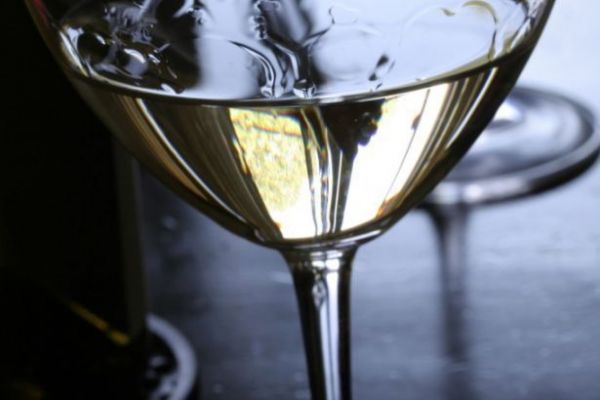The new mobile app "Wine Ring" sounds great: With the help of secret, patented algorithms, it can predict whether or not I’ll like a wine before I buy it.
It’s the latest in a series of apps that all swear they’ll solve your myriad wine-related problems—even ones you never knew you had.
I’m a skeptical non-techie, so I spent last week testing out Wine Ring, the just launched Omnipair (which aims to help you pick the right wine in a restaurant), and the latest versions of a dozen other wine apps to see what, exactly, they deliver. Several stood out as worth downloading; others seriously underperformed.
Hundreds of wine apps are on the market, offering everything from help pronouncing arcane wine names (Say Wine, launched last month), to calculating wine tax on a bottle you’re buying in a U.K. supermarket (UK Wine Tax Calculator). There are to maps to locate wineries (Winery Passport), and even, in the most recent summer, Pokemon Go for California wine country.
Only a tiny number lead you to wines you’ll probably enjoy drinking, at a price you want to pay, with an easy to use format and a simple way to buy. Here’s what I thought of the top contenders.
Wine Ring
Despite some media hype, Wine Ring (iPhone, Android, free) isn’t ready for prime time. It builds your preference profile when you take photos of wines you’ve tasted via the app and rate them “love, like, so-so, dislike.” From the profile, algorithms predict whether you’ll like other labels you scan—or not. The more wines you rate, it says, the clearer the profile.
The trouble is, Wine Ring could identify only four of my 10 test bottles and fewer than half of an additional 15 I tried. And you have to rate a lot of wines before the app kicks in.
The feature I liked best—in theory—involved scanning a restaurant’s By The Glass list and clicking on a wine to see if the app would predict I’d like it. It told me it didn’t have enough info. Alas, only a handful of restaurant lists are available so far. Rating: 3/10
Delectable
Now for my three top picks. Two started out as ways to record what you drink and whether you like it, eliminating the desperate I-can’t-remember-the-name-of-that-great-white-I-drank-last-week syndrome while you’re standing in a wine shop.
You take a photo of the label and up pops info about the wine, users’ ratings, tasting notes, and a place to add your own. For fast identification, a massive database of wines is key. Most of these apps have evolved and now offer a multitude of other features.
Delectable and Banquet (iPhone, Android; free) work in tandem, as well as separately, and they’re great. The first is the sleekly designed app favored by wine journalists, sommeliers, and winemakers. Being able to see what knowledgeable users are drinking and following their tasting notes is one of this app’s big strengths. (Be warned: This voyeurism can be addictive.) The curated “wine categories” section and “food matches” brim with the latest insider obsessions, such as Etna Rosso, pet nats, and wines with skin contact.
Within seconds, Delectable identified photos of my 10 test labels, including the name, grape variety, region, and price, even for a brand-new Tasmanian pinot noir and an obscure Hungarian sargamuskotaly.
Banquet is Delectable’s new wine-buying app, though it’s only for the U.S. This is online shopping at its best, linked to dozens of the country’s top independent shops, such as New York’s great Chambers Street Wines. Search by region, price, ratings, or grape, and even order and pick your wine up. Rating: 9/10
Vivino
Vivino (iPhone, Android; free, premium version at $4.99 a month) is similar to Delectable, though its individual wine pages include much more information. It, too, identified all my test labels in seconds. A major update on Sept. 12 added a “Wine Explorer” feature so you can search the wine database of 8 million labels, using multiple filters. It also offers direct links to a retailer right on the wine page, so you can make purchases easily.
Vivino claims 19.3 million users worldwide (nearly 4 million in the U.S.) and it’s available in 11 languages, including Ukrainian. Reviews come primarily from consumer-users, which means many are hit-and-miss. The “Best wines under $20” categories, for example, show very standard bottlings, although this may be the only app that pairs Girl Scout Thin Mints cookies with Brunello di Montalcino.
Vivino has one terrific feature that Delectable lacks: You can scan a restaurant wine list text, and the app pulls up ratings and info on the wines.
The $4.99 a month premium version adds scores from several critics, but I question whether it’s worth it. That costs $60 a year, the price of a very nice champagne. Rating: 8.5/10
Wine Searcher
Wine Searcher (iPhone, Android; free, pro-version, $49 a year) is the app version of one of the internet’s most useful wine websites and my go-to reference for price comparisons (spirits and beer, too). It tracks thousands of merchants, so it’s the best app for navigating where to buy a bottle, but the label identification feature isn’t as accurate as those of Delectable and Vivino. Rating: 7/10
Not Recommended
Snooth (free, $4.99 for label scans): This app is laughably bad. It didn’t work even with several tries and still charged me. Rating: 0/10
Drync (free): The app couldn’t identify half my test labels. The interface for buying is wildly confusing, and occasional reviews from critics were from 2003! Rating: 2/10
Corkz ($1.99): This uses Wine Searcher prices and CellarTracker tasting notes. Despite a 1.7 million-wine database, it couldn’t identify several test labels. Interface and design are confusing and ugly. Rating: 3/10
Hello Vino (free, $4.99 for unlimited label scans): This easy to use app is for beginners looking for basic, not unusual wines. The app’s strength is its focus on matching foods and occasions; interactive questions lead to recommended bottles, which include the plonky (Barefoot merlot) as well as bargains (Louis Jadot Beaujolais). Rating: 4/10
CellarTracker (free): Wine collectors love CellarTracker’s cellar management software, and its user notes are often highly interesting. But so far, the new label-scanning feature has glitches. Rating: 4/10
News by Bloomberg, edited by Hospitality Ireland
So what’s next?Omnipair, which rolls out this month in London, uses algorithms to recommend the perfect wine on a restaurant list (at a given price) to match whatever you and your friends are eating. It cross-references 4,000 wine lists with a sommelier’s food and wine databases and eventually learns your preferences and customizes recommendations to your personal taste. For now, it’s available only for London. Rating: promising.









